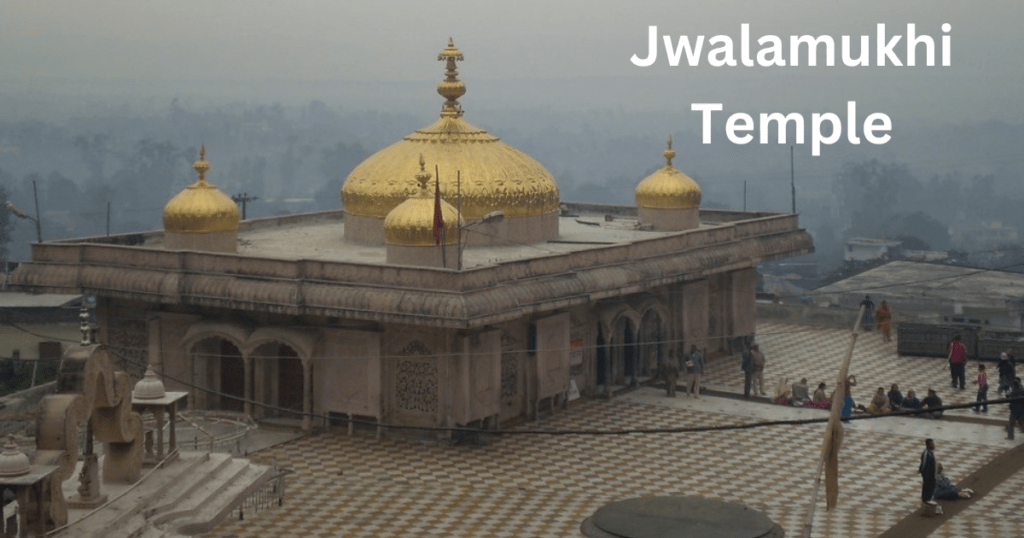Temples, Temples in Himachal Pradesh, Unknow Category
Jwalamukhi temple – History & mystery
Known as Jwala Ji, this Hindu temple may be found in the Kangra district of Himachal Pradesh, in the small village of Jawalamukhi. The temple is likely the oldest in India and is dedicated to the Hindu deity Jwala. Several sacred texts, including the Mahabharata, refer to it. In place of a statue or picture, as is customary in most temples, the Jwalamukhi temple features a blue flame that appears to be emanating from the underlying rocks.
Jwalamukhi Temple History,
The Jwalamukhi Temple Flame, burning constantly since the temple’s earliest recorded history, may be viewed from several vantage points inside the building. Many scientific investigations still need to uncover the cause of these natural fires. According to scientists, natural gas erupts from a dormant volcano beneath the Jwala Ji temple, creating the flames worshipped as Goddess by Hindus.
In the 1970s, the government of India contracted an international firm to investigate the prospect of large natural gas reserves in the country. They put in some time but ultimately quit since they claimed to have found no gas.
At one point, Mughal Emperor Akbar tried to douse the fire by placing an iron disk over it and directing water toward it. However, the fire quickly extinguished these attempts. After that, Akbar gave the temple a golden parasol as a gift. After learning Maa Jwala Devi’s abilities, even Aurangzeb eventually returned to Delhi. Jwala Ji’s eternal flame may signify our forefathers’ greatness, yet other occurrences and science are likely behind it.
Jwalamukhi Temple Mystery
Scientists and geologists have yet to speak out thus far because they have tried their best to locate a clue. Traditions surrounding Jwala Devi’s eternal flame The Jwala Ji Temple is associated with the story of Sati, the granddaughter of Brahma and the wife of Shiva.
The flame marks where Sati’s tongue dropped, which is now visible. Legend has it that Sati’s father offended Lord Shiva, prompting Sati to commit suicide by fire. Shiva danced the terrifying and awe-inspiring Tandava while carrying Sati’s burnt body on his shoulders, displaying his fury over the loss of his bride.
As Sati danced, her body disintegrated, and her fragments dropped to the ground in various locations. In another telling, Shiva carried Sati’s corpse on his shoulder while he frantically wandered the earth. The Gods prayed to Vishnu to calm Shiva back to his usual self. After Vishnu dismembered Sati’s corpse with his Sudarshana Chakra (a spinning disk-like weapon), Shiva calmed down again. According to both accounts, 51 parts of Sati’s body were scattered globally. The locals began referring to these spots as Shakti Peeths.
Jwalamukhi Devi Story
The goddess, Jwala Ji, is a little flame that glows pure blue through crevices in the ancient rock where Sati’s tongue fell. Jwala Devi Temple: A Look Back in Time According to legend, the temple was first erected by King Raja Bhumi Chandra, who set out to track down the woman who had emerged from the woods and drunk his cow’s milk. The monarch persisted in his hunt for Sati’s temple since he knew the legend. He built a shrine and hired priests to lead worship services.
The Pandavas arrived at the temple at a later time and renovated it. Maharaja Kharak Singh donated a modern temple with a golden dome and pinnacles, complete with a stunning sliding entrance made of silver plates. The roof’s original gift came from his father, Maharaja Ranjit Singh, in 1815 A.D.
A square hole, roughly 3 feet deep, with a road around it makes up the temple’s interior. “flame” (Jwala) is a Sanskrit word, and the honorific “Ji” is commonly used across the Indian subcontinent. Mata Jvala Ji and Mata Jwala Mukhi Ji are two other names for the goddess Jwala.


